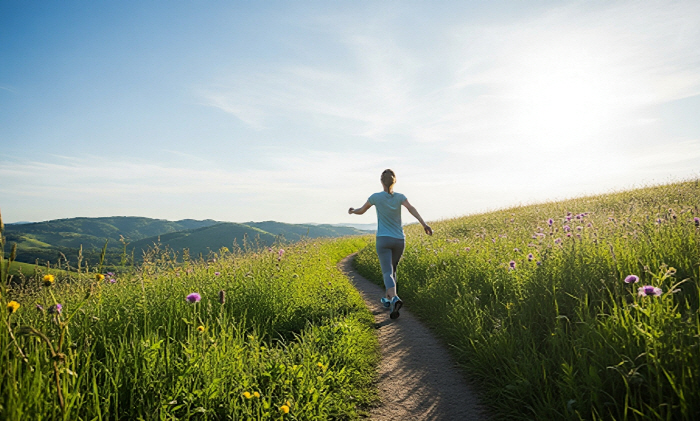Walking Exercise, Tips for Maximizing Effectiveness
Sep 18, 2025
|
Walking is an aerobic exercise suitable for both men and women of all ages, and it helps with mental stability as well as weight management and cardiopulmonary health. However, if you walk casually, your joints are often strained or not effective enough. Therefore, it is important to keep proper walking habits and proper exercise intensity.
1. Staying in the right position
The most basic of walking exercises is posture. The habit of walking with your head down or shoulders down interferes with breathing and is not good for your body shape. You have to walk with your eyes in front of you, your shoulders straight, and your waist straight. If you bend your arms naturally at 90 degrees and shake them back and forth, you can stimulate your upper body muscles together, increasing the effect of full-body exercise.
2. Adjust stride and speed
Too short stride has little exercise effect, and too large stride can put a strain on the knee joint. It is ideal to maintain a natural stride that fits your height and body type. In addition to this, interval walking, in which fast and slow steps are alternately walked, increases calorie burn and helps improve physical strength.
3. Walk steadily for at least 30 minutes
A short walk is also helpful, but it is necessary to last at least 30 minutes to properly see the aerobic exercise effect. Walking 30 minutes a day and more than 5 times a week is effective in strengthening cardiopulmonary function and controlling weight. If it is difficult to make time, it is also good to make a habit of walking on the way to and from work or during lunch time.
4. Utilizing the entire sole of the foot
The correct way to walk is to push the entire sole of the foot with your forefoot as if rolling it by touching the ground from the heel. Walking like this disperses the impact, reducing the joint burden and evenly developing the lower body muscles. It is necessary to take a conscious step using the entire sole of the foot, not just moving the foot.
5. Using music or apps If you walk alone, you can easily get bored. At this time, it is helpful to record the number of steps and calorie consumption while listening to your favorite music or using a walking-only app. When the data is visible, it gives you a sense of accomplishment and motivates you to continue your exercise steadily.
6. Don't forget stretching before and after walking
Walking exercises also require preparation and finishing. Before exercising, the calf and thigh muscles are lightly relaxed to prevent injury, and after exercising, the tense muscles are relaxed by stretching to help recover from fatigue. It's a small habit, but if you keep it consistently, the exercise effect will be much greater.
Walking exercise is not just a simple step, but a process of consciously controlling posture, stride, breathing, and speed and practicing steadily. Small daily steps accumulate, leading to heart health, physical strength, and weight management.
From today, let's walk in a more correct way. Changing habits doesn't take much effort, and the effect is greater than you think. Remember that the true value of walking is completed with consistency, and let's make healthy changes with our daily steps.
This article was translated by Naver AI translator.














